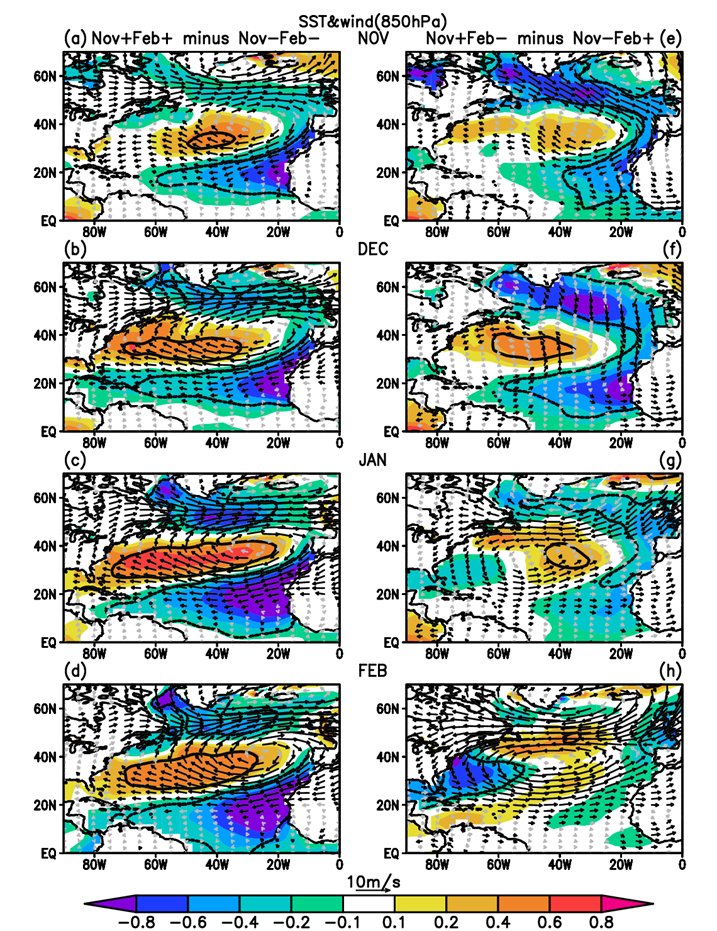Editor: 谢佳 Author: Time: 2023-10-19 Number of visits :117
The North Atlantic Oscillation (NAO) is an important mode of climate variability over the North Atlantic Ocean. Climate anomalies over North America and Europe are closely related to the phase of the NAO. The persistence, decay or switch of the NAO phase across the boreal winter determines whether the NAO-related climate anomalies are sustained, weakened or reversed during the boreal winter. In this study, Wu et al. (2022) compared the spatiotemporal evolution of atmospheric wind and sea surface temperature (SST) anomalies over the North Atlantic corresponding to persistence and switch of the NAO phase across the boreal winter.
Wu et al. (2022) revealed that the persistence of the NAO from early to late winter is associated with a strong coupling between the NAO and the North Atlantic tripole SST anomalies (Figs. 1a-d). The formation of the tripole SST anomalies is attributed to the wind-related surface latent heat flux changes. The tripole SST anomalies feedback on the NAO through eddy-mean flow interaction. In contrast, during the winters with the switch of the NAO phase, the North Atlantic SST anomalies follow the wind changes, but do not have obvious feedback on the NAO (Figs. 1e-h).
Wu et al. (2022) identified a prominent change in the winter NAO evolution around the early 1990s. The NAO switches its phase from early to late winter during 1970s through the early 1990s, but tends to maintain its phase during the boreal winter after the early 1990s (Fig. 2). This interdecadal change appears to be related to the mean SST change. The SST increase in both the tropical and mid-latitude North Atlantic Ocean in the early 1990s enhances the feedback of the NAO-induced tripole SST anomalies on the NAO.
Wu, R*, P.-X. Dai, and S.-F. Chen, 2022: Persistence or transition of the North Atlantic Oscillation across boreal winter: Role of the North Atlantic air-sea coupling. Journal of Geophysical Research-Atmospheres, 127(23), e2022JD037270. https://doi.org/10.1029/2022JD037270.

Figure 1 Difference of composite anomalies of SST (shading, ºC) and 850 hPa wind anomalies (vector, m/s, scale at the bottom center) of (a-d) positive minus negative NAO persisting years and (e-h) positive to negative minus negative to positive NAO transition years in (a, e) November, (b, f) December, (c, g) January, and (d, h) February. The black contours denote the difference of SST anomalies significant at the 95% confidence level based on the two tailed Student t test. The black vectors denote the difference of wind anomalies significant at the 95% confidence level based on the two tailed Student t test.

Figure 2 21-year sliding correlation between November and February NAO index shown at the center year of the 21-year window. The horizontal dashed lines denote the 95% confidence level of the correlation coefficient.
